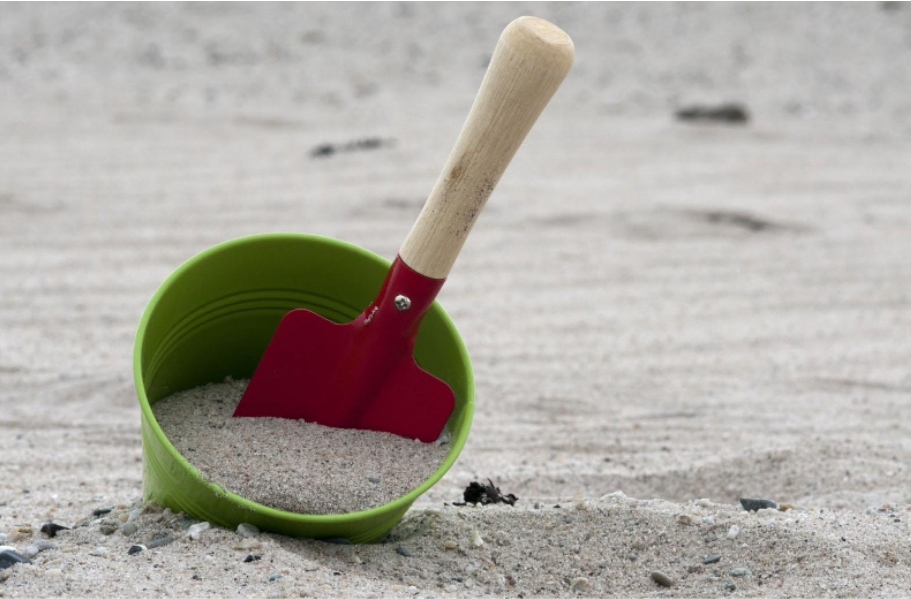10 Types of Sand Used for Gardening

When it comes to gardening, soil is undoubtedly the star of the show. But have you ever considered the importance of the supporting actor – sand? Sand is crucial in creating the right conditions for your plants to thrive. Choosing the correct sand type can significantly affect your garden’s success, from improving drainage to enhancing soil structure.
10 Types of Sand Used for Gardening
1. Play Sand
Play sand is a finely textured, soft sand perfect for creating kid-friendly areas in your garden. Whether a sandbox or a play pit, play sand provides a safe, comfortable surface for children to enjoy. It’s free from harmful chemicals, making it ideal for little ones. Additionally, play sand can be used as a levelling agent in gardens or for mixing with other soils to improve drainage.
2. Builder’s Sand
Builder’s sand, also known as masonry sand or plasterer’s sand, is a coarse, sharp sand typically used in construction. It’s not suitable for direct use in gardens due to its texture, which can hinder drainage and aeration. However, it can be used as a base layer for various garden projects, such as constructing pathways, patios, or retaining walls. When mixed with other soil components, the builder’s sand can also improve soil structure.
3. Beach Sand
Beach sand is light, fine-grained sand that’s typically found along coastlines. While it may evoke images of sunny vacations, beach sand is not the best choice for gardening. It has poor water retention and drainage capabilities, which can lead to soil compaction. If you’re set on using beach sand for aesthetic reasons, it’s best reserved for decorative purposes, like creating beach-themed areas or enhancing the appearance of potted plants.
4. River Sand
River sand is a natural, well-rounded sand worn smooth by water erosion. It’s commonly used in gardening and landscaping due to its balanced texture and excellent drainage properties. River sand promotes good aeration and prevents soil compaction, making it suitable for mixing with heavier soils like clay. Use river sand as a top dressing for lawns or as a component in potting mixes to improve overall soil quality.
5. Silt Sand
Silt sand is a fine-textured sand with a slightly higher silt content than other sands. This type of sand for gardening retains moisture well while providing good drainage. Gardeners often mix silt sand with other soil components to create loamy soil, perfect for growing various plants. This blend improves both water-holding capacity and nutrient retention.
6. Desert Sand
Desert sand is characterised by its coarse, gritty texture and warm colour. Unlike other types of sand, desert sand is unsuitable for gardening due to its poor water retention and aeration capabilities. It primarily comprises larger grains, making it less effective in supporting plant growth. Desert sand can hinder drainage, causing problems for your garden.
7. Horticultural Sand
Horticultural sand, also known as sharp sand, is a versatile option for gardeners. It has a coarse texture that improves aeration and drainage, making it an excellent choice for creating potting mixes or enhancing the soil for specific plants. Horticultural sand is often used to improve the drainage of heavy clay soils and can be mixed with compost to create a balanced, nutrient-rich growing medium for succulents and cacti.
8. Silver Sand
Silver sand is a fine, light-coloured sand often used in horticulture and landscaping. It’s valued for its ability to improve soil structure and drainage. Gardeners frequently use silver sand for creating seedbeds and propagating cuttings. Its fine texture allows for good seed-to-soil contact and helps prevent damping-off disease in young seedlings.
9. Paver Sand
Paver sand, or levelling sand, is specifically designed to set pavers, bricks, or stones in pathways or patios. While it’s not intended for use in planting beds, paver sand is crucial in hardscaping projects. It provides a stable, level surface for outdoor living spaces and helps prevent weed growth between pavers.
10. Loam Sand
Loam sand is a blend of sand and loam soil, combining the best qualities of both components. It offers excellent drainage, good aeration, and optimal water retention. Gardeners often use loam sand as a top lawn dressing to improve soil structure and promote healthy grass growth. It’s also an ideal choice for planting beds and containers, ensuring your plants receive the right balance of air and moisture.
Conclusion
The diverse range of sands discussed in this guide each serves a unique purpose: improving drainage, enhancing soil structure, or creating a safe play area for children. By understanding the properties of these sands and how to use them effectively, you can unlock the full potential of your garden.
Before adding any sand to your garden, it’s essential to assess your existing soil composition and the specific needs of your plants. Remember that soil improvement is an ongoing process, and the right sand choice can be the key to nurturing a thriving, vibrant garden landscape.
So, the next time you dig your hands into the soil, consult Mazzega’s Landscaping Supplies for the best garden sand to help your plants flourish!
